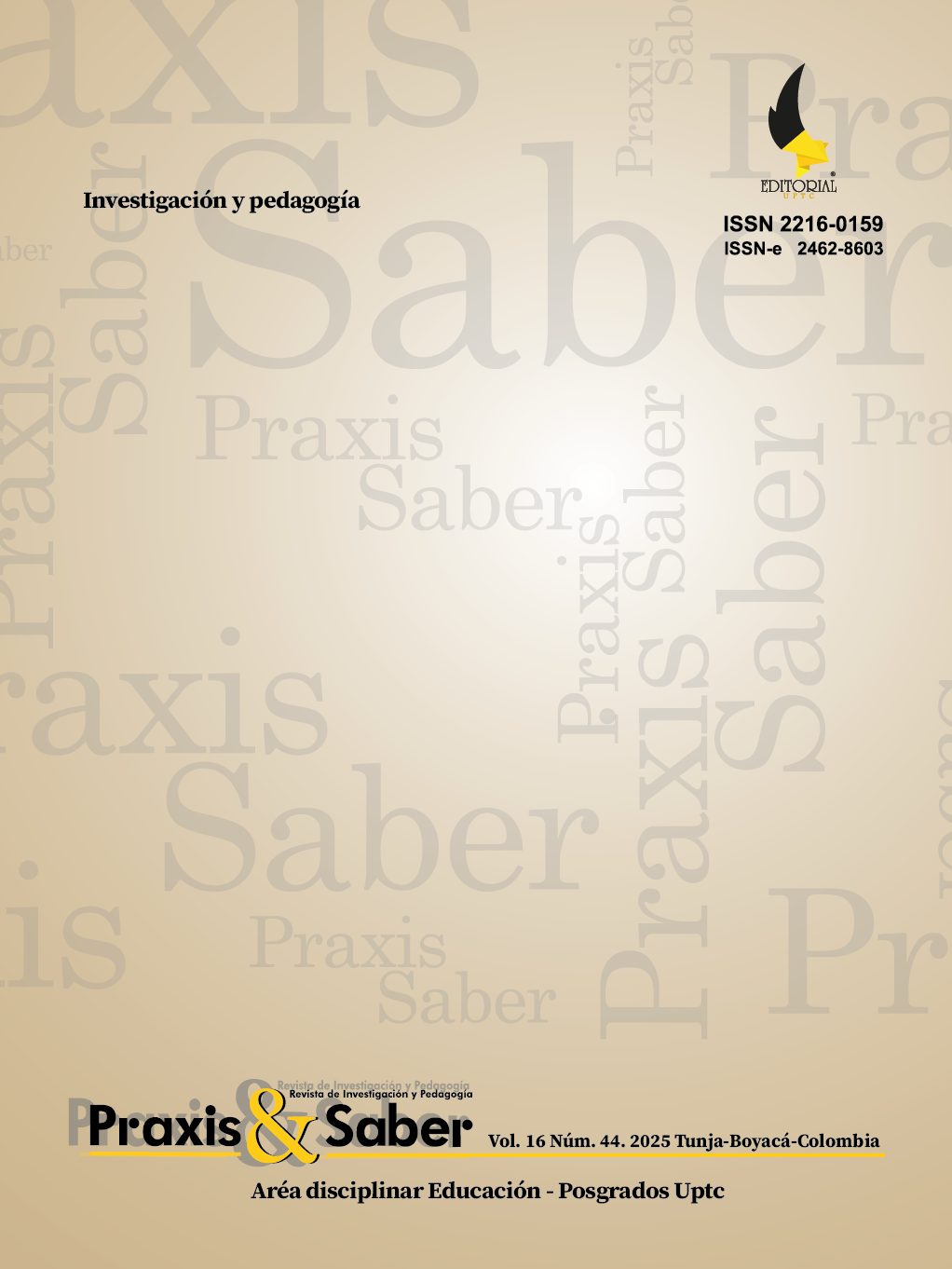The role of synesthesia in classroom learning: a neuroeducational perspective

Abstract
This study examines the impact of synesthesia on the learning process, focusing on its application in the classroom and its influence on information retention and student motivation. Synesthesia, understood as the association of sensory stimuli—such as colors and words—enhances cognitive processes and facilitates the comprehension of abstract concepts. Its potential in the educational
field allows for the evaluation of synesthesia-based strategies for teaching scientific content, with an emphasis on their applicability in various school contexts. To achieve this, a mixed-methods approach with a descriptive focus was employed, combining quantitative and qualitative analyses. Data collection is carried out through group interviews and academic performance assessments with students in Spain, supplemented by a literature review on neuroeducation. The findings indicate that synesthetic stimuli in the classroom improve information retention, sustained attention, and motivation. However, challenges such as teacher training and adaptation to student diversity are identified.
Keywords
learning, secondary education, educational strategies, neuroscience, synesthesia
References
- Acuña, M. (2018, enero 12). Neurociencia en la Educación: conociendo nuestro cerebro para mejorar el aprendizaje. EVirtualplus https://www.evirtualplus.com/neurociencia-en-la-educacion/
- Acuña, M. (2023, junio 30). Insignias y recompensas: motivando el aprendizaje. EVirtualplus.
- https://www.evirtualplus.com/insignias-recompensas-motivando-aprender/#Las_insignias_o_Badges
- Ainscow, M. (2021). Promoting Equity in Education through System Change: Lessons from the United Kingdom. In C. McLaughlin & A. Ruby (Eds.), Implementing Educational Reform: Cases and Challenges (pp. 17–40). Cambridge University Press.https://doi.org/10.1017/9781108864800.003
- Battro, A. M., Fischer, K. W., & Léna, P. (2010). The Educated Brain: Essays in Neuroeducation. Cambridge: Cambridge University Press. https://doi.org/10.1017/cbo9780511489907
- Blakemore, S. (2012). Development of the social brain in adolescence. Journal Of The Royal Society Of Medicine, 105(3), 111-116.https://doi.org/10.1258/jrsm.2011.110221
- Cortés, D. (2023, mayo 10). ¿Qué son las neuronas espejo? | 2024. Maestrías y MBA.
- https://www.cesuma.mx/blog/que-son-las-neuronas-espejo-y-por-que-las-necesitamos-los
- humanos.html#:~:text=Las%20neuronas%20espejo%20son%20un%20grupo%20de%20
- c%C3%A9lulas%20nerviosas%20o,persona%20hubiera%20realizado%20la%20actividad
- Creswell, J. W. (2021). A Concise Introduction to Mixed Methods Research. SAGE Publications, Incorporated. http://doc1.lbfl.li/acc/flmf044361.pdf
- Cytowic, R. E., & Eagleman, D.M. (2023). Wednesday Is Indigo Blue: Discovering the Brain of Synesthesia (Updated ed.). MIT Press, 47(02), 47-1138. https://doi.org/10.5860/choice.47-1138
- De Bie, A., Marquis, E., Cook-Sather, A., & Luqueño, L. P. (2021). Promoting Equity and Justice Through Pedagogical Partnership. (1st ed.). Routledge. https://doi.org/10.4324/9781003446521
- Devia-Cárdenas, J. A. (2018). La biopedagogía: una mirada reflexiva en los procesos de aprendizaje. Praxis & Saber, 9(21), 179-196. https://doi.org/10.19053/22160159.v9.n21.2018.7862
- Fischer, K. R., & Immordino‐Yang, M. H. (2008). The Jossey-Bass reader on the brain and learning. (Primera edición). John Wiley & Sons, Inc.
- Gaeta, M. L., Rodríguez, M. D. S., González, L. G., Malpica, O. M., & Camacho, K. G. (2023). Emociones, afrontamiento y autorregulación del aprendizaje en universitarios: influencia de características sociodemográficas durante la pandemia por COVID-19. Psicumex, 13, 1-32. https://doi.org/10.36793/psicumex.v13i1.492
- Garcés-Vieira, M. V., y Suárez-Escudero, J. C. (2014, junio). Neuroplasticidad: aspectos bioquímicos y neurofisiológicos.
- http://www.scielo.org.co/scielo.phpscript=sci_arttext&pid=S012087052014000100010#:~:text=La%20neuroplasticidad%20es%20la%20potencialidad,la%20disfunci%C3%B3n%20o%20el%20da%C3%B1o
- Guimet, H. M. (2022, diciembre 20). Cómo la neuroeducación interfiere en el aprendizaje. Salud Con Ciencia. https://blogs.uoc.edu/cienciasdelasalud/es/neuroeducacion-como-ayuda-neurociencia-enaprendizaje-educacion/
- Instituto Nacional del Cáncer. (2024). Diccionario de cáncer del NCI. Cancer.gov. https://www.cancer.gov/espanol/publicaciones/diccionarios/diccionario-cancer/def/neuroendocrino
- Jolles, J., & Jolles, D. D. (2021). On Neuroeducation: Why and How to Improve Neuroscientific Literacy in Educational Professionals. Frontiers In Psychology, 12. https://doi.org/10.3389/fpsyg.2021.752151
- Ley Orgánica 3/2020, de 29 de diciembre. Por la que se modifica la Ley Orgánica 2/2006, de 3 de mayo, de Educación, Ley Orgánica n.º 3/2020. 2020. 30 de diciembre de 2020. España. Boletín Oficial del Estado, (340).
- Nicolson, R. I., & Fawcett, A. J. (2023). The Neuroscience of Learning: Classroom Strategies for Maximizing Student Potential. Routledge.
- Ortiz-Cermeño, E. (2020). ¿Cómo evolucionan y se interpretan los valores cívicos en la diversas teorías e instituciones contemporáneas de la educación? Diego Marín Librero
- Rodríguez-Villegas, S. (2022, 8 septiembre). El aporte de las neurociencias para el proceso de enseñanza-aprendizaje. Revista Oficial del Colegio de Licenciados y Profesores. https://doi.org/10.29057/ia.v7i14.3993
- Sabater, V. (2022, octubre 3). Acetilcolina: el neurontransmisor que facilita la comunicación entre neuronas. La Mente Es Maravillosa.
- Simner, J., & Hubbard, E. M. (2024). The Oxford Handbook of Synesthesia (2nd ed.). Oxford University Press, , USA.
- Sousa, D. A. (2022). How the Brain Learns. (Vols. 1-0). Corwin, https://doi.org/10.4135/9781071855324
- Tokuhama-Espinosa, T. (2021). Neuromyths: Debunking False Ideas About the Brain (2nd ed.). Springer.
